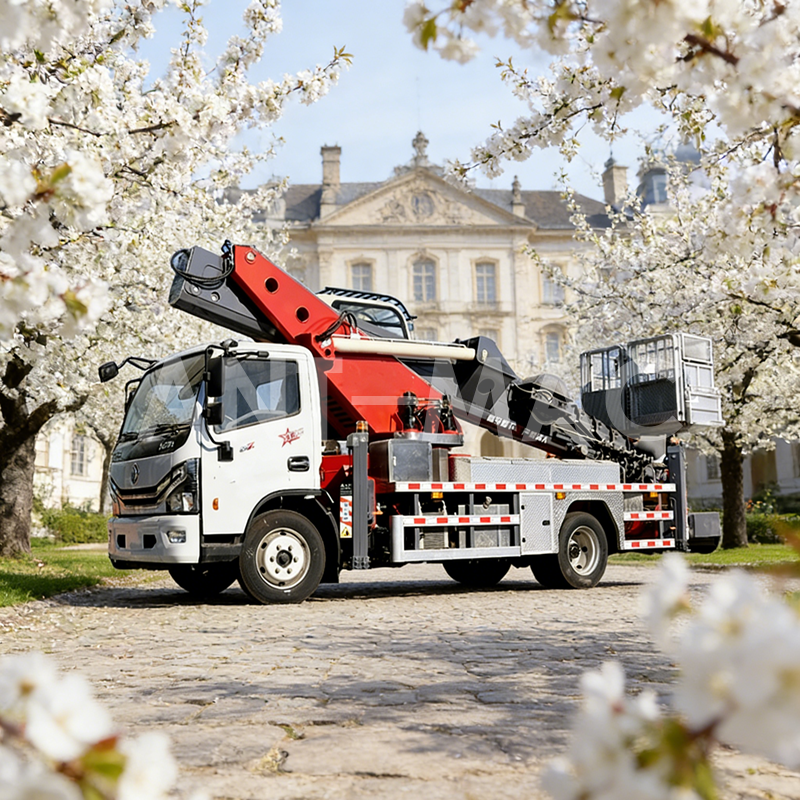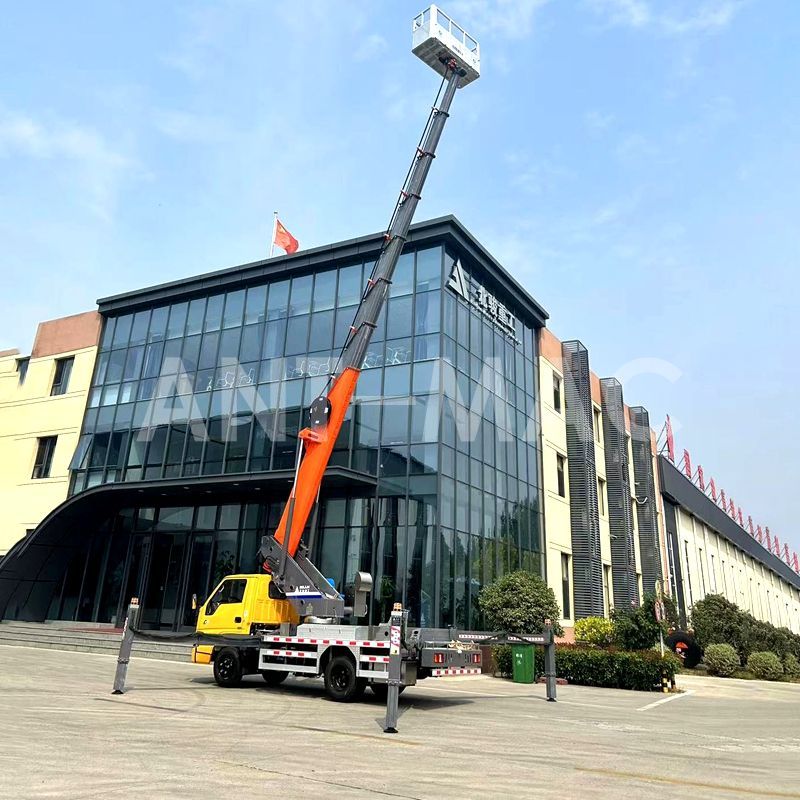Guide to Battery Maintenance for Fully Automatic Scissor Aerial Work Lifts: 6 Key Points to Extend Service Life
As the "power core" of fully All Terrain Automatic Scissor Lifts, the performance of storage batteries directly determines the operating efficiency and safety stability of the equipment. Neglecting battery maintenance may not only cause sudden shutdowns to affect construction schedules but also significantly shorten battery life (normal life is 3-5 years, which may drop sharply to 1-2 years with improper maintenance). Below, we detail scientific maintenance methods from the perspectives of charging standards, daily inspections, and environmental adaptation.
I. Scientific Charging: Avoid Double Damage from "Overcharging and Undercharging"
Fully automatic scissor aerial work lifts mostly use lead-acid batteries or lithium batteries, both of which need to follow the principle of "shallow charge and shallow discharge". Specific operations are as follows:
Charging Timing: Charge in time when the power display drops to 20%-30%. Avoid "deep discharge" after the power is exhausted (deep discharge of lead-acid batteries will cause plate sulfation, while lithium batteries may trigger a protection mechanism to lock).
Charging Duration: Use the original supporting charger.Lead-acid batteries want to be trickle-charged for any other 1-2 hours after being entirely charged (but the whole duration ought to now not exceed 12 hours). For lithium batteries, strength off inside 1 hour after the charger indicator turns inexperienced to stop electrolyte evaporation or cellphone getting old brought on by means of overcharging.
Charging Environment: Keep the charging place ventilated and dry, with the temperature managed at 10-30℃. Charging beneath 0℃ will minimize battery activity, and above 40℃ may additionally set off thermal runaway risks. Especially in summer, maintain away from warmth sources (such as engines and radiators).
II. Daily Inspection: Comprehensive Monitoring from Appearance to Connections
A 5-minute battery inspection earlier than every day operation can keep away from 80% of surprising disasters in advance:
Appearance Inspection: Check if the battery case is bulging, cracked, or leaking (lead-acid battery leakage is acidic and will corrode metallic parts). If abnormalities are found, give up the use of it at once and substitute it.
Connection Detection: Check if the positive and negative terminals are loose or oxidized (oxidation will increase contact resistance and reduce charging efficiency by more than 30%). If white powdery oxides appear, rinse with hot water, dry, and apply Vaseline for anti-corrosion.
Power Calibration: Perform a "full charge and full discharge" calibration for lead-acid batteries once a week, i.e., fully charge and then operate continuously until the power is below 10%, to avoid false capacity labeling caused by long-term "memory effect" of the battery.
III. Storage Maintenance: "Three Prevention" Principles for Long-Term Idle
If the equipment needs to be idle for more than 15 days, it must be handled according to the standards of "preventing undercharging, moisture, and high temperature":
Power Retention: Lead-acid batteries should be stored with 50%-70% power, while lithium batteries should be stored with 30%-50% power (excessively high power during long-term storage may cause gas evolution, and excessively low power may trigger irreversible capacity attenuation).
Environment Control: Store in a dry and ventilated place, avoiding direct sunlight or rain. The bottom of the battery can be padded (such as isolated from the ground with a wooden board) to prevent corrosion from ground moisture.
Regular Recharging: Recharge the idle battery every 30 days. Lead-acid batteries should be recharged to 70%, and lithium batteries to 50% to avoid plate sulfation or cell passivation caused by long-term undercharging.
IV. Temperature Adaptation: Avoid Performance Loss in Extreme Environments
Batteries are extraordinarily touchy to temperature, requiring centered defensive measures:
High-Temperature Protection: When the ambient temperature exceeds 35℃ in summer, keep away from non-stop charging for the duration of noon. A cooling fan (wind pace ≥2m/s) can be established in the battery compartment to limit the battery working temperature.
Low-Temperature Response: When the temperature is beneath 0℃ in winter, the battery capability will naturally limit with the aid of 20%-40%. At this time, shorten the single operation duration. Before charging, preheat the battery to 10-15℃ (do now not warmth with an open flame; a unique heating pad can be used) to keep away from crystallization brought about with the aid of low-temperature charging.
V. Cleaning Standards: Detailed Maintenance to Improve Conductivity
Case Cleaning: Wipe the battery floor with a dry material each and every week. If electrolyte leaks, neutralize it with a 5% sodium bicarbonate answer and then wipe dry (for lead-acid batteries only; no longer relevant to lithium batteries).
Interface Maintenance: Clean the charging plug and socket as soon as a month to take away dirt and oxides. Ensure no sparks are generated when inserting (sparks point out bad contact and require instantaneous maintenance).
Battery Compartment Cleaning: Regularly test if the drainage holes of the battery compartment are unobstructed to keep away from corrosion of the battery backside due to water accumulation. Moisture absorbents can be positioned in the compartment (replaced as soon as a month).
VI. Common Misconceptions: These Behaviors Are Accelerating Battery Failure
Misconception 1: Charging before the power is exhausted will "damage the battery" — modern batteries have no memory effect. Frequent shallow charging is beneficial to extend life; on the contrary, deep discharge is more harmful.
Misconception 2: Mixing chargers is "time-saving and convenient" — chargers for batteries of different brands and capacities have different parameters. Mixing may cause excessive charging voltage or unstable current, directly damaging the cells.
Misconception 3: "Continuing to use" a bulging battery — bulging is a sign of abnormal internal pressure, which may cause leakage or even explosion. Once found, it must be replaced immediately; disassembly or puncture is prohibited.
Scientific Maintenance Achieves a Win-Win of "Life and Efficiency"
The core of battery maintenance for fully All Terrain Automatic Scissor Lifts lies in "prevention first and precise operation". By standardizing charging processes, strengthening day by day monitoring, and adapting to environmental conditions, no longer solely can the battery existence be prolonged to extra than 5 years, however additionally the secure electricity of the gear all through high-altitude operations can be ensured, lowering security dangers precipitated with the aid of surprising strength outages. It is endorsed to set up a "battery protection ledger" to report every charging duration, electricity changes, and inspection results, laying a basis for environment friendly tools operation.
 In-depth Analysis of Return on
In-depth Analysis of Return on
 A Cost-Effectiveness Revolutio
A Cost-Effectiveness Revolutio
 2026 Trend Insights: Four Core
2026 Trend Insights: Four Core
 Five Criteria for Selecting Re
Five Criteria for Selecting Re
 Russian
Russian
